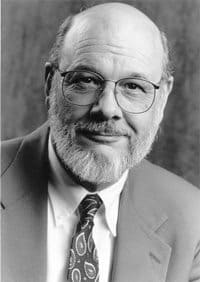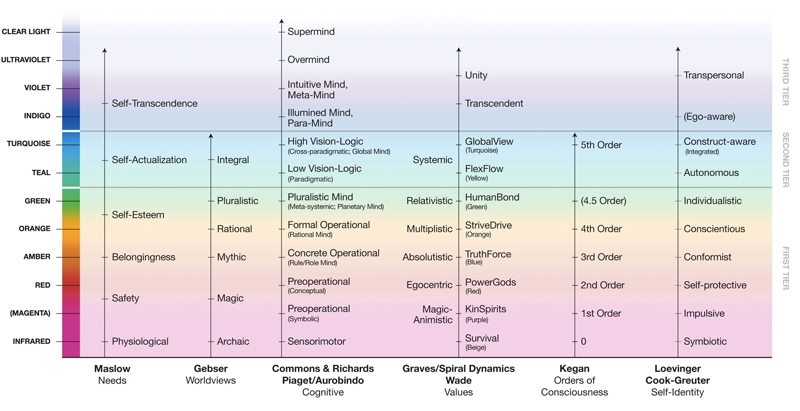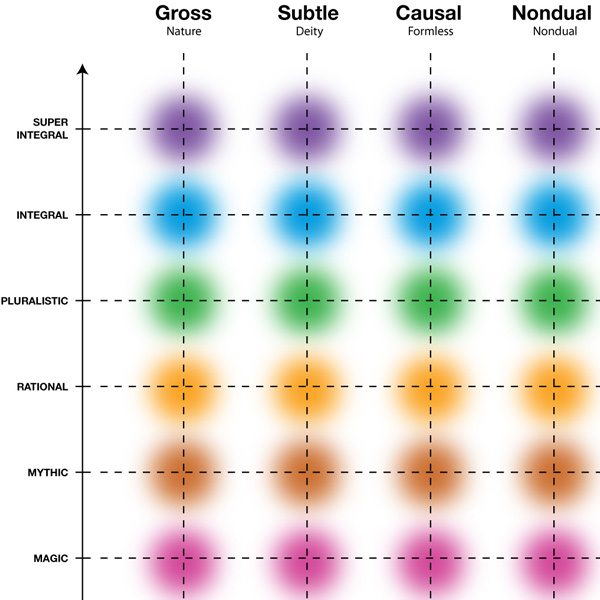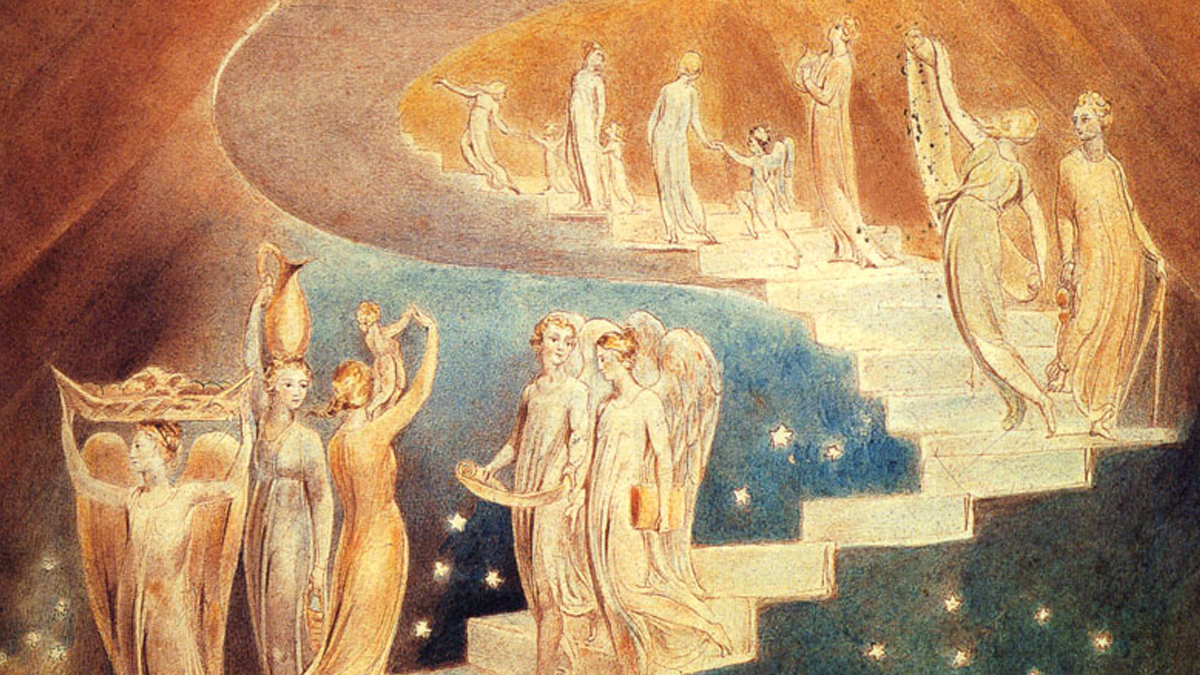Integral Institute paid a formal tribute to Dr. James W. Fowler’s extraordinary body of work, presenting him with a very special lifetime achievement award—the first Integral Spirituality Award ever presented. It was an incredibly moving occasion for everyone involved, and remains one of the most poignant memories in Integral Spiritual Center’s already abundant legacy. What follows is a very special 2-hour presentation of Dr. Fowler’s body of work, led by Rollie Stanich with additional commentary by Ken Wilber.

Dr. James W. Fowler III is Professor of Theology and Human Development at Emory University, and was director of both the Center for Research on Faith and Moral Development and the Center for Ethics until he retired in 2005. He is a minister in the United Methodist Church, and is best known for his book Stages of Faith, published in 1981, in which he sought to develop the idea of a developmental process in faith.
During the 2007 Integral Spiritual Center conference, Integral Institute paid a formal tribute to Dr. Fowler’s extraordinary body of work, presenting him with a very special lifetime achievement award—the first Integral Spirituality Award ever presented. It was an incredibly moving occasion for everyone involved, and remains one of the most poignant memories in Integral Spiritual Center’s already abundant legacy.
What is of ultimate concern?
Rollie begins by explaining three central intentions behind his presentation on Dr. Fowler’s work. First, he hopes to accurately communicate what Fowler means by the faith—it is, after all, a tremendously loaded word, wrapped in many different and often-conflicting interpretations, and we must first define our terms in a cogent and meaningful way if the discussion is to go anywhere.
Second, he will offer a detailed overview of each of Dr. Fowler’s proposed stages of faith. The purpose of this presentation, he explains, isn’t just to better understand and qualify the world around us, but to bring more love, more consciousness, and more skill to all of our relationships—meeting people exactly where they are with a full and open heart.
Finally, and most Rollie invokes the enormous implications and opportunities Fowler’s work has to offer the future of spirituality on this planet. His Stages of Faith represents one of first fundamental steps toward a “universal catechism” approach to all the world’s religious and spiritual traditions, capable of guaging and guiding people’s growth through the entire spectrum of human potential.
He then situates Fowler’s work in context of Integral theory and practice, emphasizing the Stages of Faith as one of many different developmental lines—each measuring distinct “intelligences” or vectors of human growth. Other examples of these developmental lines include cogntion (studied by Piaget and Aurobindo), values (studied by Graves, Beck, and Cowan), self identity (studied by Cook-Greuter and Loevinger), worldviews (studied by Gebser), and morals (studied by Kohlberg). Taken together, these psychological models offer a comprehensive map of human growth and development in all its multifarious dimensions. Each successive stage of consciousness adds more complexity and more understanding of the world around us, as well as more capacity for love, compassion, and connection. By ascending the spire of psychological development to higher and higher altitudes of consciousness, humanity becomes increasingly more human with each and every step.

What is faith?
“As human beings, we have imaginations, intuitions, and moments of awakening that disturb us into awareness of dimensions of circumambient reality that we can only name on our own as Mystery. And yet our feet mire in the clay of everyday toil—getting and giving, spending and being spent—in the struggle for survival and meaning. In the midst of contingency, suckled on uncertainty, we spend our blessed and threatened years becoming selves through relationships of trust and loyalty with others like us—persons in communities. We attach to one another in love; we struggle with fidelity and infidelity; we share our visions of ultimate destiny and calling; our projections and hope; our moments of revelations. We are language-related, symbol-born, and story-sustained creatures. We do not live long or well without meaning—that is to say, we are creatures who live by faith.” –James Fowler
Faith, Rollie reminds us, is better understood as a verb than a noun. It’s original meaning, unfortunately lost in modern English translation, is “to set one’s heart on”—that is, to set your heart upon something is to place your faith in it, to enact a sacred connection between lover and Beloved. The shape, range, and intensity of this faith can change over time, growing through magic, mythic, rational, pluralistic, and integral stages of development—but the overall role of faith as a fountainhead of meaning and purpose remains a permanent fixture in our hearts, regardless of our explicit relationship with God, spirituality, or religion.

Ken offers a brief summary of the distinction between states of consciousness and stages of consciousness, both of which have had a profound influence upon how we think of and relate to our faith. Vertical stages of development (such as Fowler’s Stages of Faith) act as containers of consciousness—unseen structures that pattern our knowledge and mold our interpretations of the world around and within us. Horizontal states, on the other hand, are the stuff of experience itself—gross physical and emotional experiences; subtle visions, inspirations, and revelations; causal glimpses of transcendence, clarity, and emptiness; nondual states of radical union, flow, and atonement.
Spiritual practice such as meditation or contemplative prayer typically works to transform temporary states into permanent traits by stabilizing gross, subtle, causal, and nondual states in succession. However, we do not experience these horizontal states in a rigidly sequential way like we do vertical stages of development. States are ever-present, meaning they are accessible to all people at all times—“peak experiences” that punctuate our personal narratives with moments of catharsis, epiphany, clarity, and unity. This is true regardless of our psychological and spiritual growth—a person can experience a subtle state of divine Illumination early in life at Fowler’s stage 2 (Mythic-Literal), and then again decades later, after developing to stage 6 (Universalizing). Though the actual phenomenological state may be similar, the interpretations of the experience would differ drastically from different altitudes of consciousness, with an immense chasm of meaning, context, and sense of personal duty separating the two experiences.
Finally, Rollie offers a quick breakdown of some of the different ideas people typically have when they hear the word spiritual: the idea of spirituality as it’s own developmental line; spirituality as the highest potential in any developmental line; spirituality as first-hand experience of the divine; spirituality as a general attitude, disposition, or openness; etc. Again, as it pertains to Fowler’s work, we are discussing the first definition: spirituality as a distinct line of human development, growing through its own stages of maturity—in fact, while many other versions are certainly possible (and needed!), Fowler’s work represents one of the finest and most sophisticated treatments of the spiritual line of development that we have ever seen.
James Fowler’s Stages of Faith
What follows is a brief overview of each of Fowler’s Stages of Faith, written in Fowler’s own words.
STAGE 0: PRIMAL FAITH
“If we start with infancy-the time from birth to two years-we have what we call undifferentiated faith. It’s a time before language and conceptual thought are possible. The infant is forming a basic sense of trust, of being at home in the world. The infant is also forming what I call pre-images of God or the Holy, and of the kind of world we live in. On this foundation of basic trust or mistrust is built all that comes later in terms of faith. Future religious experience will either have to confirm or reground that basic trust.”
STAGE 1: INTUITIVE-PROJECTIVE FAITH
“The first stage we call intuitive/projective faith. It characterizes the child of two to six or seven. It’s a changing and growing and dynamic faith. It’s marked by the rise of imagination. The child doesn’t have the kind of logic that makes possible or necessary the questioning of perceptions or fantasies. Therefore the child’s mind is “religiously pregnant,” one might say. It is striking how many times in our interviews we find that experiences and images that occur and take form before the child is six have powerful and long-lasting effects on the life of faith both positive and negative.”
STAGE 2: MYTHIC-LITERAL FAITH
“The second stage we call mythic/literal faith. Here the child develops a way of dealing with the world and making meaning that now criticizes and evaluates the previous stage of imagination and fantasy. The gift of this stage is narrative. The child now can really form and re-tell powerful stories that grasp his or her experiences of meaning. There is a quality of literalness about this. The child is not yet ready to step outside the stories and reflect upon their meanings. The child takes symbols and myths at pretty much face value, though they may touch or move him or her at a deeper level.”
STAGE 3: SYNTHETIC-CONVENTIONAL FAITH
“There is a third stage we call synthetic/conventional faith which typically has its rise beginning around age 12 or 13. It’s marked by the beginning of what Piaget calls formal operational thinking. That simply means that we now can think about our own thinking. It’s a time when a person is typically concerned about forming an identity, and is deeply concerned about the evaluations and feedback from significant other people in his or her life. We call this a synthetic/conventional stage; synthetic, not in the sense that it’s artificial, but in the sense that it’s a pulling together of one’s valued images and values, the pulling together of a sense of self or identity.
One of the hallmarks of this stage is that it tends to compose its images of God as extensions of interpersonal relationships. God is often experienced as Friend, Companion, and Personal Reality, in relationship to which I’m known deeply and valued. I think the true religious hunger of adolescence is to have a God who knows me and values me deeply, and can be a kind of guarantor of my identity and worth in a world where I’m struggling to find who I can be.
At any of the stages from two on you can find adults who are best described by these stages. Stage Three, thus, can be an adult stage. We do find many persons, in churches and out, who are best described by faith that essentially took form when they were adolescents.”
STAGE 4: INDIVIDUATIVE-REFLECTIVE FAITH
“Stage Four, for those who develop it, is a time in which the person is pushed out of, or steps out of, the circle of interpersonal relationships that have sustained his life to that point. Now comes the burden of reflecting upon the self as separate from the groups and the shared world that defines one’s life. I sometimes quote Santayana who said that we don’t know who discovered water but we know it wasn’t fish. The person in Stage Three is like the fish sustained by the water. To enter Stage Four means to spring out of the fish tank and to begin to reflect upon the water. Many people don’t complete this transition, but get caught between three and four. The transition to Stage Four can begin as early as 17, but it’s usually not completed until the mid-20s, and often doesn’t even begin until around 20. It comes most naturally in young adulthood. Some people, however, don’t make the transition until their late 30s. It becomes a more traumatic thing then, because they have already built an adult life. Their relationships have to be reworked in light of the stage change.
Stage Four is concerned about boundaries: where I stop and you begin; where the group that I can belong to with conviction and authenticity ends and other groups begin. It’s very much concerned about authenticity and a fit between the self I feel myself to be in a group and the ideological commitments that I’m attached to.”
STAGE 5: CONJUNCTIVE FAITH
“Sometime around 35 or 40 or beyond some people undergo a change to what we call conjunctive faith, which is a kind of midlife way of being in faith. What Stage Four works so hard to get clear and clean in terms of boundaries and identity, Stage Five makes more permeable and more porous. As one moves into Stage Five one begins to recognize that the conscious self is not all there is of me. I have an unconscious. Much of my behavior and response to things is shaped by dimensions of self that I’m not fully aware of. There is a deepened readiness for a relationship to God that includes God’s mystery and unavailability and strangeness as well as God’s closeness and clarity.
Stage Five is a time when a person is also ready to look deeply into the social unconscious—those myths and taboos and standards that we took in with our mother’s milk and that powerfully shape our behavior and responses. We really do examine those, which means we’re ready for a new kind of intimacy with persons and groups that are different from ourselves. We are ready for allegiances beyond our tribal gods and our tribal taboos. Stage Five is a period when one is alive to paradox. One understands that truth has many dimensions which have to be held together in paradoxical tension.”
STAGE 6: UNIVERSALIZING FAITH
“Some few persons we find move into Stage Six, which we call universalizing faith. In a sense I think we can describe this stage as one in which persons begin radically to live as though what Christians and Jews call the “kingdom of God” were already a fact. I don’t want to confine it to Christian and Jewish images of the kingdom. It’s more than that. I’m saying these people experience a shift from the self as the center of experience. Now their center becomes a participation in God or ultimate reality. There’s a reversal of figure and ground. They’re at home with what I call a commonwealth of being. We experience these people on the one hand as being more lucid and simple than we are, and on the other hand as intensely liberating people, sometimes even subversive in their liberating qualities. I think of Martin Luther King, Jr. in the last years of his life. I think of Thomas Merton. I think of Mother Teresa of Calcutta. I think of Dag Hammerskjold and Dietrich Bonhoeffer in the last years of his imprisonment. These are persons who in a sense have negated the self for the sake of affirming God. And yet in affirming God they became vibrant and powerful selves in our experience. They have a quality of what I call relevant irrelevance. Their ‘subversiveness’ makes our compromises show up as what they are.”
STAGE 7: INTO THE FUTURE (TRANSPERSONAL AND NONDUAL COMMONWEALTH)
As each of these stages has unfolded sequentially throughout history, and history shows no indication of stopping anytime soon, it doesn’t require a momentous leap in logic to predict future stages of faith emerging in the future. Although the data supporting these higher stages is currently slim at best, this does not mean they do not lay in wait just behind the horizon—there was, after all, a period of history thousands of years ago when it only required one or two major psychological transformations to become an adult in the eyes of society, while today’s world requires anywhere from three to six, and it’s not hard to imagine a time in our distant future when people grow through a dozen different stages before puberty….

Become a member to access the full episode
Start building your big picture mind & support the global emergence of Integral consciousness

“Integral Life is the most important and globally-relevant platform for the leading edge of Integral consciousness evolution”
– Eugene P.
About Rollie Stanich
Rollie has played a vital part in the emerging Integral movement as the Chief Facillitator of Integral Spiritual Center, as a former managing editor of Integral Naked from 2004-2005, and as an ongoing contributor to Integral Life. Rollie's spiritual path is that of contemplative Christianity—he is a practitioner of Centering Prayer and a longtime student of Fr. Thomas Keating.
About Ken Wilber
Ken Wilber is a preeminent scholar of the Integral stage of human development. He is an internationally acknowledged leader, founder of Integral Institute, and co-founder of Integral Life. Ken is the originator of arguably the first truly comprehensive or integrative world philosophy, aptly named “Integral Theory”.

